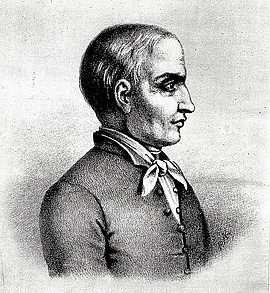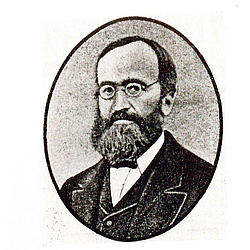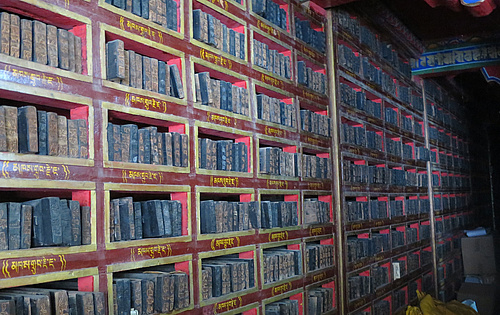Tibetan Lexicography
Long before Western research became aware of Tibet, the Tibetans themselves were concerned with their language. A bilingual glossary composed during the 8th and 9th century marks the beginnings of Tibetan lexicography. According to the will of the Tibetan ruler at that time, this glossary was supposed to serve for translating Buddhist texts from the Sanskrit: The “Great compendium about the derivation of words” (Tibetisch: Bye brag tu rtogs par byed pa chen po, Sanskrit: Mahāvyutpatti). It covers over nine thousand Sanskrit/Tibetan sets of cognates and forms the basis for the dictionaries composed by Tibetans in centuries to come. Later, other works were added, like the Tibetan translation of the Indian Amarakośa from the 14th century as well as numerous works of the local lexicography, among them bilingual or even multilingual dictionaries taking also into account the Chinese, Mongolian, and Manchurian languages.

For a long time though, Tibet was regarded inaccessible by the Western World. During the 18th century, initial insights into Tibet and early information on Tibetan literature were brought to Europe primarily by missionaries, among them the Italian Jesuit priest Ippolito Desideri (1684–1733). About one hundred years later, the Hungarian linguistic researcher Alexander Csoma de Kőrös (1784–1842) arrived in Tibet on his search for the origins of Hungarian. He was the first to describe in detail the Tibetan language and the canonical literature. To achieve this, he used works of the native scholarly tradition like the already mentioned Mahāvyutpatti.
In the research of the Tibetan during the 19th century, there are German contributions to be pointed out, among them the works of Isaak Jakob Schmidt (1779–1847) or Anton Schiefner (1817–1879).

Above all, the Moravian missionary Heinrich August Jäschke (1817–1883) is to be mentioned. His name is most closely linked with the early research and lexicographical recording of the Tibetan language. For ten years, Jäschke lived in the Western Himalayas, where he studied West Tibetan dialects and the Tibetan written language. With the objective to translate the Bible, he began writing a textbook on the Tibetan language including phonetics and a collection of terms. The latter eventually provided the basis for his Handwörterbuch der Tibetischen Sprache (Tibetan-German Dictionary). It was handwritten and published lithographically in 1871. The version translated ten years later into English had great influence on many dictionaries that eventually followed, especially the Tibetan-English Dictionary by Sarat Chandra, published in 1902 and popular to this day.

In the 20th century, glossaries were added to these general dictionaries, composed mainly by German- and English-speaking scholars in accordance with the canonical Tibetan literature. These findings were included in special dictionaries like the Tibetan-Sanskrit Dictionary by Lokesh Chandra (1959–1961). Also of great importance today are the Tibetan-Tibetan-Chinese Bod-rgya tshig-mdzod chen-mo (Chengdu 1985) and Goldstein’s New Tibetan-English Dictionary of Modern Tibetan (2001). At present, there are several dozens of bilingual dictionaries for Tibetan.
The Munich dictionary therefore continues a long tradition of dictionaries, one that had actually begun long before European scholars arrived in the Tibetan language area. And yet it breaks new ground in Tibetan lexicography: Previous dictionaries indicate rarely, or only for limited areas of literature, in which texts a word is cited and what kind of meaning it actually bears in different texts. However, the Wörterbuch der tibetischen Schriftsprache (Dictionary of Written Tibetan) aims at researching and informing about precisely that. It does not stop at the meaning of words but instead for the first time, documents the vocabulary by means of instances from source texts.
